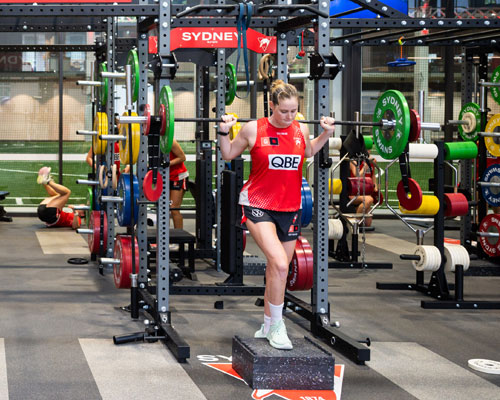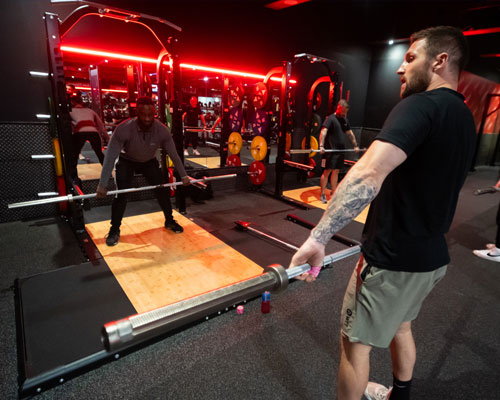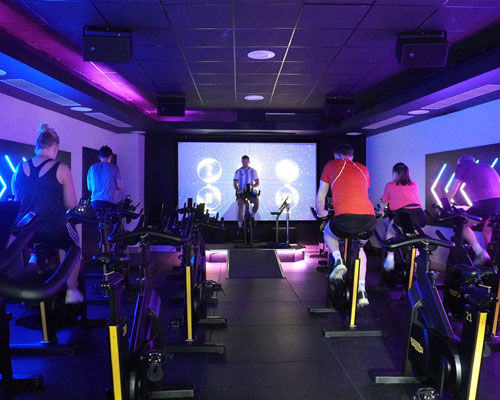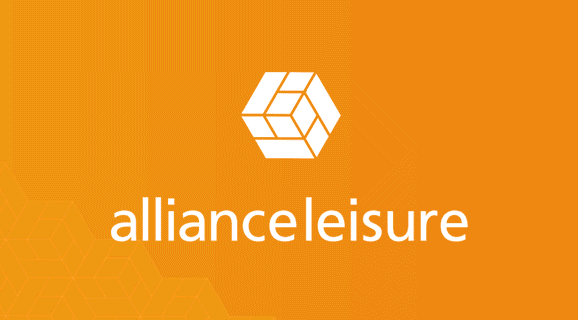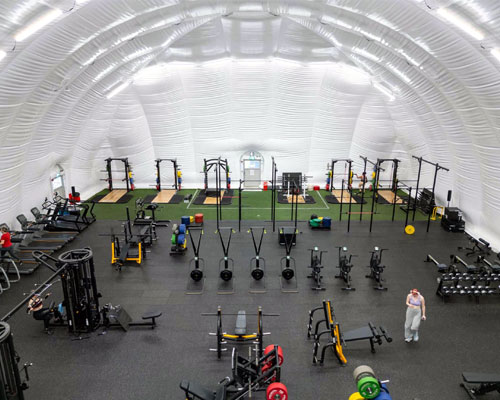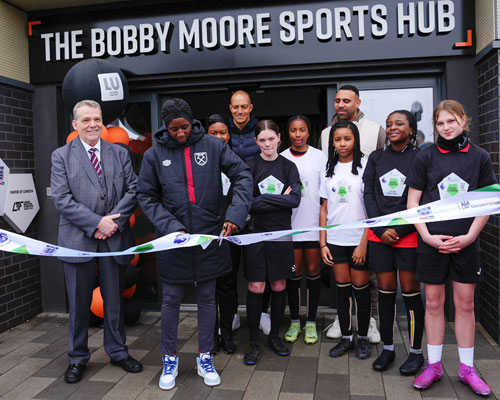features
Insight: Grow stronger
As the industry enters a phase of regrowth following the loss of members during lockdown, it’s crucial to understand customer acquisition cost versus the lifetime value of each customer, as Paul Bedford and Jamie Owens explain

Despite losing between 20-50 per cent of members during multiple lockdowns, most operators have the same or less to spend on marketing than pre-COVID, so the industry needs to run leaner while still creating growth.
Every gym in the UK is effectively a scale-up business at present, meaning operators need to grow without throwing money at the challenge.
It’s vital to think about what information is important to a growth business – it’s not necessarily about more data, it’s about having access to the data that’s relevant to the challenges and opportunities your operation faces right now.
Imagine you’re on Dragons’ Den assessing a business – what data points would matter most? The good news is you wouldn’t need to guess because there’s a standard set of metrics many investors use, called Unit Economics, that helps you understand a number of key things, such as how much it costs to win a new customer, how much you generate from that customer and how quickly your investment pays back.
Unit Economics uses three data points:
• Customer Acquisition Cost (CAC)
How much money you spend – on average – getting a single new customer. During a recent survey of 600 gyms, more than half reported they didn’t know their CAC.
• Lifetime Value (LTV)
How much money a single customer generates for you, on average, over the time they use your services. This metric is becoming more of a regular measure for the health and fitness sector.
• Payback Period
How long it takes to recover the money spent on customer acquisition. This is important as it helps you understand how fast you can spend money on acquiring new customers without creating a cashflow hole and is required to make informed marketing decisions.
Customer Acquisition Cost
How to figure it out: A simplistic way to do this is listing out your business costs related to winning new customers and dividing that by the number of members you sign in that same period – one calendar month or one quarter, for example.
It’s important to include the cost of all business activities connected to customer acquisition, such as advertising, posters, local radio ads, print materials, Google ads, staff – including the time it takes to tour prospects and any commission – and free joiner gifts.
Factor in discounts too and make sure you allow for seasonality, which will impact the effectiveness of your customer acquisition programme.
You can’t include general fixed costs, such as wear and tear, rent and rates, so it’s important to determine the type of business you want to run. The day-to-day costs of running your club must be kept separate from the costs of acquiring members.
Lifetime Value
How to figure it out: Lifetime Value is talked about in two ways; member tenure and member yield or ARPU (Average Revenue Per User) and comes down to how many months, on average, one customer stays and how much they spend during that time.
The average tenure of members can be skewed by sleeper members. Check for any sleepers when doing your calculations and remove them from your dataset to ensure you’re working from accurate figures.
Next is the average revenue per member, which you multiply by the tenure to get an average Lifetime Value. You need to calculate Lifetime Value by looking at what members are actually paying per month – not your advertised rate. Any membership discount you give is actually an acquisition cost and must be added to your cost of acquisition.
The longer a member stays, the more they get into the habit of buying a coffee or grabbing a snack and seeing these costs as part of their visit experience.
It’s difficult to calculate this revenue, so exclude it for now, but bear in mind the impact retention can have on your members’ lifetime value across all areas where they spend with you. This is also true of membership referrals.
Payback period
How to figure it out: Once you know your customer acquisition costs and average revenue per month you can work out how many months, on average, it takes for the member to be a customer in order to create a profit.
A return on your investment enables you to reinvest money into winning another customer, and this payback period is what indicates how fast you can be spending money.
In simple terms, if it costs £50 to acquire a member and they pay £50 a month membership, your payback period is one month, which means you can spend £50 again next month to win another customer; although note that you are getting no margin.
However, if your acquisition cost is £100 and the average membership is £25 per month, your payback period is four months. This means you need to either wait four months before reinvesting, raise investment or take on debt so you can accelerate growth by winning customers faster than it pays back.
The alternative is to reduce your customer acquisition costs and/or increase your membership prices, so payback is quicker.
Markers of success
In pretty much any sector, a Customer Acquisition Cost to Lifetime Value (CAC:LTV) ratio of 1:3 indicates your business is growing effectively. This means if you’re spending £30 acquiring a new customer and they generate £90 of lifetime value you’re spending about the right amount.
If you’re closer to a 1:1 ratio (ie, you’re spending £30 to get a customer who generates £30) you’re spending too much acquiring new customers and need to reduce your costs or increase your lifetime value. However, if you’re at 1:5 you’re not spending enough on growing your business.
Although it sounds impressive to have a higher CAC to LTV ratio, it probably means you’re missing out on accelerating your speed of growth and can afford to invest more in marketing.
Offsetting member losses
There are several schools of thought around offsetting the loss of member volume that some clubs are experiencing as we come out of lockdown, with various solutions being proposed. These include:
1. Finding cheaper ways to acquire customers
For example, tap into a new social media platform you haven’t used before, work to get more positive customer reviews online or source a new marketing partner.
2. Increasing your prices
This will enable you to operate a similar size business with fewer members, but you need to be confident that this increase is competitive and will land well with your existing members and not deter new ones.
3. Reducing prices
This will enable you to attract more customers and increase member volume.
Which route you take should depend on local market conditions and competition. The ‘price increase’ strategy needs to be supported by exceptional facilities and services. The ‘price decrease’ strategy means you will have to significantly increase the volume of sales to bring in more revenue and that can be challenging.
You’ll need a solid plan to source new customers and unless you’re already in the low cost sector, it could also bring you into competition with budget gyms, which have the economies of scale to run their businesses more cheaply.
Added to that, when companies discount, they often lose tenure, as the type of person that joins on the back of a discount generally isn’t a person that would have joined or stayed at your normal rate.
Many people ask whether retention is more important than sales. They’re both vital for a successful business, but think of it like this: if you have 1,000 customers that stay for three months you’d have to sell an additional 3,000 memberships to achieve the same revenue when compared with 1,000 customers that stay 12 months.
Growing secondary spend
Developing other revenue streams can help offset the immediate loss of members, while increasing spend-per-member can be especially valuable where there’s resistance to membership price increases.
Increasing secondary spend has the added benefit of leading to increased revenues across the board as your membership numbers rebound by making each member more valuable.
Upsell existing members with new services, such as weight management programmes, food boxes, coffee club memberships and fitness testing. Doing so will also have the benefit of improving your overall service and driving retention, so the business will do better and members will be happier.
Research carried out with a mid-market chain showed that after seven months’ membership, members were spending up to an additional 50 per cent of their monthly fee on secondary spend within the club.
Play to your strengths
It’s important to recognise your strengths and weaknesses. Fitness businesses have a deep understanding of health and wellbeing and the benefits of exercise and provide amazing customer experiences through this knowledge, but you may feel you are light on skills in areas such as customer acquisition.
If this is the case, focus your energy on your core strengths. By providing a five-star experience you’ll convert more prospects, get more referrals, encourage more secondary spend, work more efficiently and in doing so, reduce acquisition costs and increase lifetime value, as members will naturally stay longer, due to the excellent service you’re offering.
Outside your core competencies, implement the best systems you can get to help your business function with leaner resources. For example, if it’s beyond your scope, you don’t need to build a digital home workout platform when you could partner with an expert offering the same thing and when it comes to your customer acquisition programme, you may want to outsource this, by selecting the strongest partners.
The wise adage says that if you keep doing the same things you’ll keep getting the same results – if you’re lucky. The risk is that you’ll see diminishing returns as other operators become more competitive, so now is the time to embrace new ways of working as you scale-up your business for post-lockdown growth.
Paul Bedford (left) is a health club retention specialist, while Jamie Owens is director of fitness partnerships at Hussle





























